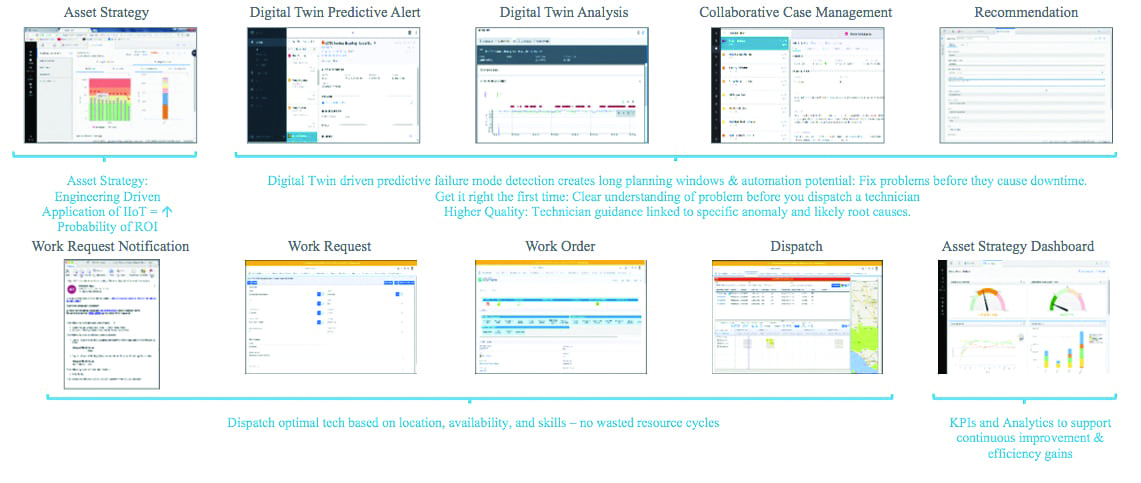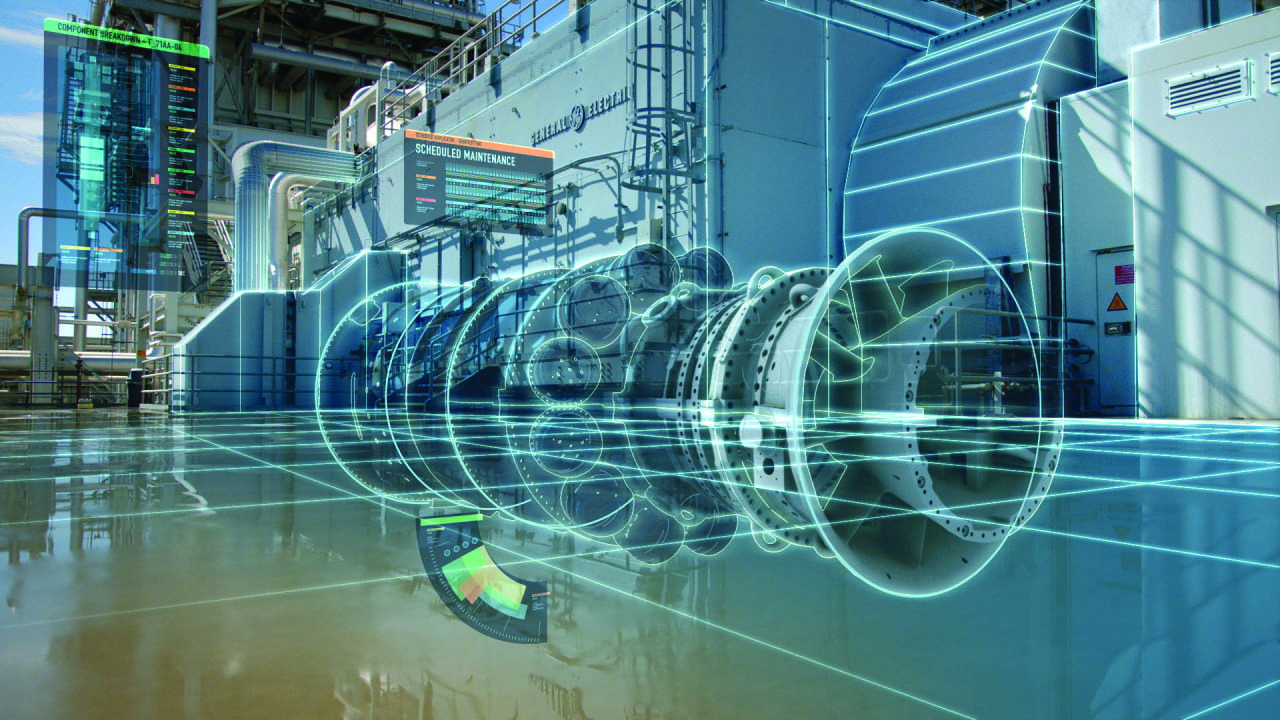If funds were unlimited, digital technology could be utilized in countless ways to improve plant performance and reduce downtime. But costs do matter, so taking a graded approach to managing risks and costs when implementing new tools may be the best strategy for long-term success.
Keeping maintenance costs in check and mitigating the risks of equipment failures is uppermost in the minds of power plant operators. Downtime affects the reliable production of electricity, which can have a ripple effect up and the down the power grid.
Those in charge of ensuring a plant operates reliably and safely can utilize many tools, particularly in the digital age, where data can provide operators and maintenance workers with a wealth of information about the performance of turbines, transformers, pumps, emissions equipment, and other plant assets.
Power plant operators would like to have unlimited money and resources to improve their facility’s performance and reduce downtime. In the real world, those tasked with keeping maintenance costs in line, and managing risks to the plant’s assets, know it’s their asset management strategy (Figure 1) that not only protects the plant’s equipment and people but also the operator’s bottom line.
Software as Part of “Reliability Management”
Steve Deskevich, an asset performance management (APM) solution manager at GE Digital in Atlanta, Georgia, told POWER that today’s plants are undergoing a “digital transformation” when it comes to what he called “reliability management.” They’re putting technology systems in place, helping the generation system, and using software to develop their asset strategy, he said.
The transformation is part of the wave of the industrial internet of things (IIoT), part of the larger Internet of Things (IoT), a network of devices—everything from cars to lights to thermostats and refrigerators—that has embedded software, sensors, and electronics enabling the items to connect with each other and exchange data. Reports from the McKinsey Global Institute say the IoT has a potential economic impact of $3 trillion to $11 trillion by 2025. Power companies including Exelon, NRG, Pacific Gas & Electric (PG&E), and PSEG are among the U.S. power providers using GE’s digital services; international customers include Kahramaa, which provides transmission and distribution services for water and electricity in Qatar, and Scottish and Southern Energy (SSE) in Europe.
At its core, APM “is a software application designed to increase asset reliability and availability while reducing unnecessary maintenance. APM connects disparate data sources and uses advanced analytics to turn that data into actionable insights while fostering collaboration and knowledge management across the organization,” according to GE Digital, which launched its APM suite in 2016 as part of its industrial cloud-based Predix service. Predix is a PaaS (platform as a service) and provides a way to connect machines, data, and people.
“At its heart, with APM, we are going to enable [a customer] to drive up availability, and drive down your O&M [operations and maintenance] costs,” said Scott Bolick, GE’s senior vice president–power digital product management. Bolick, who works from GE Digital’s office in San Ramon, California, told POWER that by using the company’s APM services, a power plant can reduce unplanned downtime by 5%, maintenance costs by 25%, and maintenance issue false alarms by 75%.
“When we look at all of the analytics we’re running, we’re looking at the NERC [North American Electric Reliability Corp.] failure modes,” Bolick said. “We run a backward-looking analysis, looking at how we would have caught [a problem], and when we would have caught it. We then can retroactively determine what the benefit would have been.”
GE in early October announced deployment of what it calls its APM “killer app” from its Monitoring and Diagnostics (M&D) Center in Atlanta, where its teams monitor the health of thousands of turbines and generators in 900 power plants worldwide (Figure 2).
“It’s what I call a ‘drink your own champagne moment,’ ” Bolick said. “This is a massive IIoT use case. We are looking at 200 billion data tags each day, from 1 million sensors, in hundreds of power plants. If you look at North America, look at Europe, the proliferation of renewables, we know that plants have to be available, and [those plants] have to save money. A big concept of the digital power plant is putting the software in place to be flexible to the changing dynamics of the market, to show the value of having flexible digital solutions in place.”
“As we went through this process over the past couple of years, what we realized is that a lot of power and generation utilities were looking to upgrade their M&D capabilities,” Bolick said. “Now they can deploy APM in a manner to meet their business outcomes.”
Proactive Maintenance Through Digitization
“The digital transformation has changed things,” said Deskevich, whose background includes work in the nuclear power sector with Ventyx, an ABB company, and in various positions—including nuclear engineer—at Duke Energy. “I remember clearly… in the early 2000s there was a turning point. Reliability engineers got the message they’re not going to get the budget they ask for just because no one understands what they’re doing. That has changed. A lot of M&D centers were getting into the [digital] business, with tools that drive analytics.
“Today’s term is digital twin,” said Deskevich. A digital twin is a digital replica of an asset—such as a piece of equipment, process, or system—that imparts data that can tell users how the asset is performing across its lifecycle. It enables operators to, among other things, be proactive rather than reactive in maintenance scenarios. “The asset strategy has ramped up to the point where a lot of customers are realizing they need a digital twin; they just need to adjust their definition of it. They can leverage the concept of APM and having an asset strategy to help [operations], and more customers are latching on to that concept.”
“Digital twin can mean many different things,” said Jeremiah Stone, vice president of APM product management for GE Digital in San Ramon. Stone met with POWER in July at GE Digital’s Technology Briefing Day and later in a phone interview. “Fundamentally, it’s used to facilitate an intelligent asset strategy. It enables a continuous improvement process, looking to decrease operations and maintenance costs. It’s how we can identify the failure modes and damage mechanisms, identify over-maintenance, stretch maintenance intervals, and make sure we are not increasing risk as a result.”
Deskevich talked about the “maintenance rule,” something he saw often in the nuclear sector. “I think the maintenance rule process in nuclear [is exemplified] by some of the big utilities throughout the world that are known throughout the industry as leaders in processes they share with other companies about how to maintain reliability.” He said the maintenance rule provides one of the best examples of using APM.
“You adjust your maintenance and how much money you put into maintenance by deciding not everything is critical,” he said. “That’s asset strategy management. Where can I back off [maintenance]? It’s one of the things APM is useful for, deciding what is critical and what is not.
“Think about where and when you need to do maintenance online versus offline. A fundamental of digital twin is to think broader, take a graded approach, and manage risk and costs across all assets. Then you will see cost reductions,” Deskevich said.
“We deal primarily with brownfield (older) assets in the grid,” said Stone, noting GE has worked with companies to preload Failure Mode Effects Analysis (FMEA) information for about 800 different asset classes, and is doing similarity-based modeling to understand failure modes and map failure modes to sensors. “The exercise there really is: How do we utilize information from those brownfield assets without adding new sensors or telemetry? We want to get as far as we can with existing control systems. To the degree there is a local controller with information available, we can use the control system data as is.”
Bolick said the upgrades to APM are really about “two different avenues—new analytics and increased collaboration with customers (Figure 3). We have the ability to layer analytics, including advanced machine learning, then take those analytics and run against the digital twin model. We can know how the machine was maintained and how it was serviced. By being able to layer on top the different analytics, we can push the [issue] notification out to as much as 12 days, with 90% confidence. The sooner you detect an issue, the less cost you have to repair the issue. This will be a much better analytical engineer, particularly as we move OEM beyond GE, to infinitely scalable architecture.”
Said Stone: “Many existing environments were never [designed] to pull the data out. There is not data architecture in place. With new projects, we can build twins and help with the network architecture as the systems are built.”
And Stone reiterated the importance of always keeping an eye on the bottom line. “This is all about focusing on what business partners can do, and the tools that can be used to reduce O&M costs.”■
—Darrell Proctor is a POWER associate editor.













